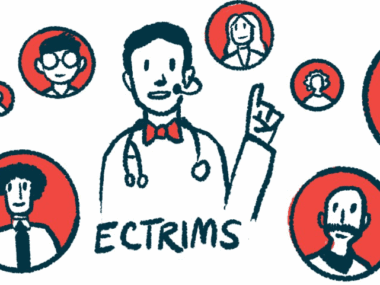High medical costs for MS patients starting Ocrevus, Lemtrada, Tysabri
Markups, administering infusible therapies at hospitals blamed for higher prices
Written by |

People with multiple sclerosis (MS) tend to accrue more medical costs after switching to infusible therapies Ocrevus (ocrelizumab), Tysabri (natalizumab), or Lemtrada (alemtuzumab), according to an analysis of data from commercially insured patients in the U.S.
“The overall healthcare costs for MS patients increased a lot after they initiated infusible DMTs [disease-modifying therapies] including” Ocrevus, Tysabri, and Lemtrada, the scientists wrote.
The findings suggest most of the increase is attributable to the medications and the researchers suggested that controlling markups could help limit healthcare costs for patients. The study also found that at-home infusions tended to be cheaper than an infusion at a hospital or physician’s office.
“This study adds to our understanding on the real-world costs of IV [intravenous] DMTs, which can help providers and patients in treatment selection and U.S. payers to guide formulary decisions,” the scientists wrote in “Real-world cost of care and site of care in patients with multiple sclerosis initiating infused disease-modifying therapies,” which was published in the Journal of Medical Economics. The work was funded by Novartis, which markets Kesimpta (ofatumumab), an MS therapy administered under the skin.
More than 20 disease-modifying therapies are approved for treating relapsing types of MS. These medications broadly work to dampen the inflammatory attack on the nervous system that drives the disease, helping to reduce the risk of relapse and slow its progression.
Some approved DMTs are oral medications, others are injectable, and some are given by a steady drip into the bloodstream (infusion). In economic terms, a unique consideration with infusible therapies is that they must be prepared and administered by healthcare professionals, meaning the administration of the therapy can accrue medical costs.
Comparing first-year medical costs of three infusible DMTs
Scientists at Novartis and other institutions studied insurance data in order to evaluate healthcare costs for patients who started on infusible DMTs, or IV DMTs. The researchers used a commercial insurance database called the HealthCore Integrated Research Database and identified patients who started on IV DMTs from April 2017 to July 2019.
The analysis included data for 1,058 patients treated with Ocrevus, 166 on Tysabri, and 46 on Lemtrada. Comparisons from a year before starting the IV DMTs to the first year of treatment showed a substantial increase in medical costs after starting the three therapies.
With Ocrevus, the average medical cost increased from about $68,000 the year before to more than $125,000 in the first year and nearly $110,000 the second year.
With Tysabri, the average cost increased from about $53,000 to more than $117,000 in the first year and $106,000 in the second year.
The average costs with Lemtrada increased from about $87,000 to nearly $180,ooo in the first year and $108,000 in the second year. The especially high spike in the first year of Lemtrada is likely related to its dosing schedule. It’s given at a higher dose and involves more infusions in the first year.
For all three medications, the cost of the therapy itself was the main driver of the higher costs. In all three groups, the cost of medication alone accounted for more than three-quarters (78%) of the total costs.
Markups and outpatient costs
The researchers emphasized the real-world costs insurance providers paid for these medications is substantially higher than the therapies’ list price.
“The difference between IV DMT cost in real-world settings and [list price] represents the markups during acquisition of the drug,” the researchers wrote, noting it’s important to consider these markups in assessing the therapies’ overall cost.
The highest markup was seen for Ocrevus. The price paid by insurers was on average about 60% higher than the therapy’s list price ($104,853 vs. $65,000).
“Drug cost, including price markups during the supply chain to patients, is the main driver for the overall healthcare expenditure for MS patients using IV DMTs,” the researchers wrote.
Infusible medications may be administered in a physician’s office, in an outpatient hospital clinic, or at home. Comparisons of costs in this study showed at-home infusions tended to be less expensive than at medical centers. Outpatient infusions at hospitals were the most common, but also the most expensive.
Part of the increase in costs associated with hospital infusions is probably because patients generally get more services, the researchers said, adding hospital centers also may include additional markups that can inflate costs.
“Depending on the manner of acquiring the drug, hospital outpatient facilities may include additional markups to the drug price (e.g. profits, tax) and bill to the patients’ medical insurance, along with administration costs (“buy and bill”),” the researchers wrote. “Shifting patients away from more costly hospital outpatient departments, negotiating site-neutral pricing for specialty medications, or using DMTs that do not requiring infusion-related resources (e.g. oral/self-injectable DMTs) may help reduce the healthcare expenditure.”
The researchers said a limitation of their analysis is that the database only covered commercially insured patients, meaning the results “may not be generalizable to government-sponsored health insurance members or those uninsured or underinsured.”






